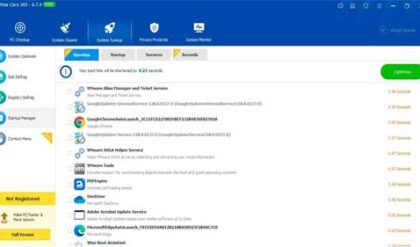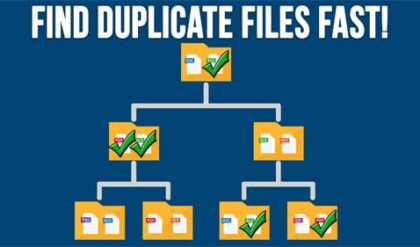
The software development landscape is constantly evolving with new technologies, tools, and practices transforming how applications are built and delivered. Understanding the latest trends is key for developers looking to expand their skill sets and create cutting-edge solutions.
The Rise of Low-Code/No-Code Development Platforms
Low-code/no-code platforms allow building apps quickly with minimal hand-coding, enabling faster delivery with fewer specialized technical resources. These cloud-based tools provide graphical interfaces and pre-built components for developing, testing, and deploying applications.
Benefits driving adoption include:
- Faster Delivery: Quickly build and modify apps without extensive coding expertise
- Cost Savings: Reduce expenses on developers and infrastructure
- Productivity: Empower non-technical staff to create solutions addressing their needs
The Growing Importance of Cloud-Based Development
The scalability, flexibility, and cost-efficiency of cloud computing make it integral for modern software teams. Migrating development environments to the cloud unlocks many advantages:
Scalability
Cloud platforms easily scale computing and storage without hardware constraints. This handles unpredictable traffic spikes and growth in data volumes.
Accessibility
Globally available cloud tooling improves developer collaboration, allowing coding from anywhere with just an internet connection.
Cost-Effectiveness
Pay-as-you-go pricing eliminates upfront infrastructure costs while auto-scaling optimizes resource usage minimizing expenses.
The Continued Ascendancy of DevOps Practices
DevOps principles like CI/CD, infrastructure-as-code, and monitoring foster collaboration between development and operations for faster releases. Integrating DevOps across the lifecycle improves software quality and delivery velocity.
Key DevOps practices gaining widespread adoption include:
- Continuous Integration and Continuous Delivery (CI/CD): Automating builds, tests, and deployments of code changes accelerate release cycles
- Infrastructure as Code (IaC): Programmatically managing infrastructure with code enhances flexibility and reproducibility
- Monitoring and Alerting: Logging key application and infrastructure metrics enables optimization and prompt issue detection
Additional Trends: Shift left testing, ChatOps adoption, GitOps growth
The Proliferation of Open-Source Software
Open-source software (OSS) is pivotal in the software development landscape. OSS projects provide developers with freely available, modifiable code, fostering innovation and collaboration.
The benefits driving enterprise OSS adoption include:
- Cost-Effectiveness: Avoiding licensing fees for proprietary software reduces total cost of ownership
- Security: Public code reviews and rapid fixes create more secure and robust software
- Innovation: Developers enhance existing projects or launch new ones through open collaboration
The Rise of Programming Languages
Developer language preferences evolve with the creation of new frameworks, platforms, and tools. Understanding trending languages helps build relevant skills.
Python’s Continued Dominance
Python’s simplicity, vast libraries, and applicability across domains sustain its growth. Its increased use in data science/ML and growth as a general-purpose language cement its place as a top programming language.
JavaScript’s Enduring Relevance
JavaScript powers interactive web UIs, and Node.js expands towards the backend and DevOps. Strong community support and new language features ensure JavaScript remains ubiquitous.
Go’s Growing Popularity
Go provides faster runtimes, easier concurrency and supports modern software architectural patterns. It works well for microservices, web assembly and cloud-native apps.
TypeScript’s Steady Growth
TypeScript brings type safety to JavaScript, improving readability and catching bugs early. It works across frameworks and has strong backing from Microsoft and Google.
Kotlin’s Rise in Android Development
Kotlin addresses Java pain points with a more concise syntax while interoperating seamlessly with existing Java code. It has become a leading language for Android apps, and Google has officially supported it.
The Ascendancy of Frameworks
Developers assemble custom technology stacks, choosing frameworks aligning with architectural patterns and business objectives:
Full-Stack Frameworks Reign Supreme
With integrated capabilities, opinionated MVC frameworks like React, Angular, and Vue help quickly build complete web apps. Their versatility across device types and strong ecosystem momentum drive adoption.
Microservices Architecture Gains Momentum
Lightweight service meshes and API gateways accelerate the composing of independently deployable microservices built using language-specific frameworks.
API-First Development Takes Center Stage
Tools like Postman and Swagger drive standardization of REST API development, supporting extensibility and reuse across channels.
Machine Learning Frameworks See Increased Use
Python-based frameworks like TensorFlow, PyTorch, and sci-kit-learn lower barriers to ML app development, even for non-specialists.
Cloud-Native Development Frameworks Gain Traction
Frameworks adopting cloud architectural principles, including serverless and containers, enable building resilient, auto-scalable apps.
Version Control and Collaboration Trends
As a prominent version control system (VCS), GitHub offers valuable insights into collaboration practices among developers:
Git Dominates Version Control
Git’s distributed architecture provides greater decentralization and flexibility compared to older systems like Subversion (SVN). Web interfaces like GitHub and GitLab drive ubiquitous adoption, delivering better team collaboration.
Forking and Pull Requests Drive Collaboration
Forking creates personal project copies, enabling isolated experimentation, while pull requests help exchange changes among collaborators. Virtually all major open-source software projects host code on public repositories permitting global collaboration through forking and pull requests.
Issue Tracking and Project Management on GitHub
Native issue tracking capabilities turn GitHub into a transparent project management platform. Kanban boards visualize progress while teams discuss implementations within issue threads or Pull Request comments about proposed code changes.
Security Considerations in the Modern Development Landscape
Security is now treated as a first-class concern throughout the entire software delivery lifecycle:
Security Audits and Code Reviews Gain Importance
Evaluating applications against known vulnerabilities early in development using automated scans and manual reviews prevents subsequent issues. Integrating security checks into CI/CD pipelines shifts security left.
Static Code Analysis Tools See Increased Use
SAST (Static Analysis Security Testing) tools like SonarQube and LGTM inspect codebases detecting vulnerabilities, leaked credentials, or non-adherence to best practices without executing programs. Continuous analysis provides ongoing feedback optimizing secure development standards and architecture choices.
Security-Focused Frameworks Gain Traction
Secure-by-design frameworks like Zap, Hapi, and Secjuice appropriate security controls by default. Built-in validation, encryption, and rate-limiting accelerate the building of resilient, compliant applications.
As software increasingly powers key business functions, understanding the tools and techniques shaping modern development helps organizations innovate at scale securely. Tracking popular programming languages, architectural patterns, collaboration models, and testing methodologies provides key insights for formulating optimal application delivery strategies. GitHub’s software development statistics show how new trends and tools offer a competitive advantage for developers and technology decision-makers seeking to leverage leading technologies and best practices.
Conclusion
The software development ecosystem continues advancing rapidly with new languages, frameworks, architectural styles and delivery models emerging constantly. Low code/no code tools enable rapid application development while cloud-based tooling provides on-demand scale and accessibility. DevOps practices like CI/CD pipelines, infrastructure-as-code and monitoring foster reliable releases at higher velocities. The prominence of open-source software makes an abundance of high-quality tools freely available to developers.






